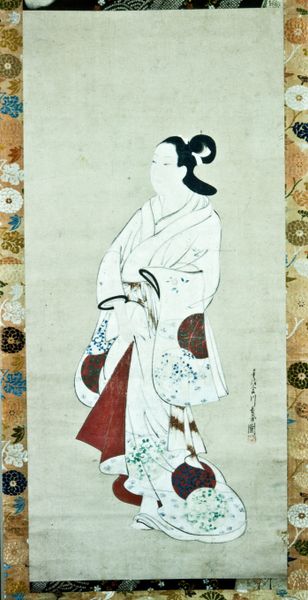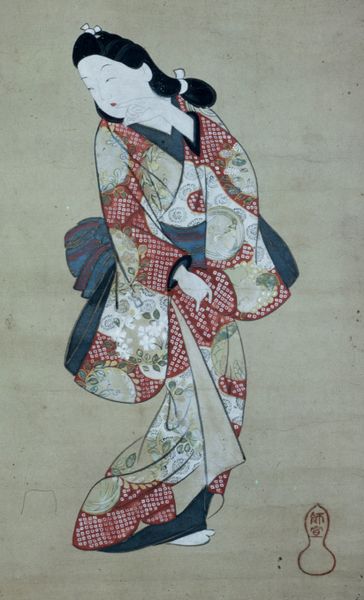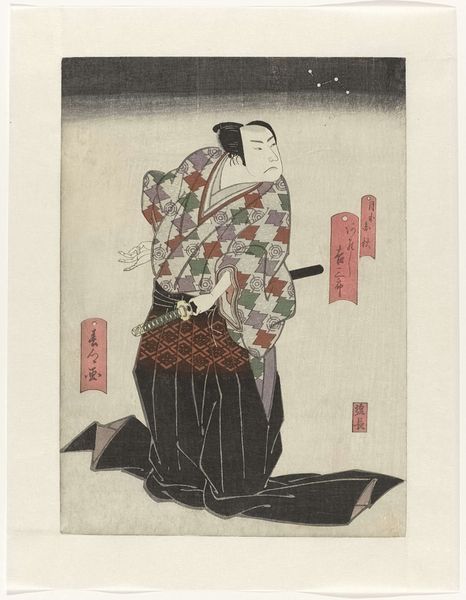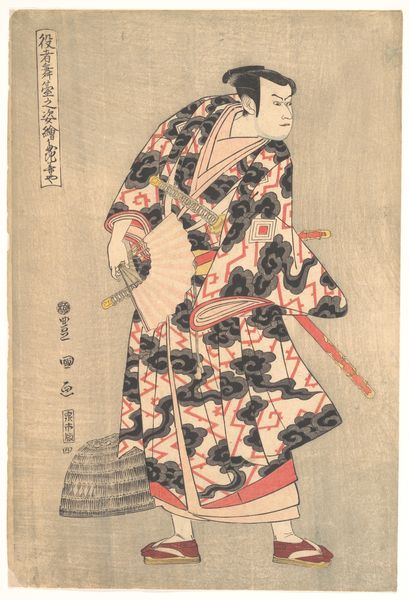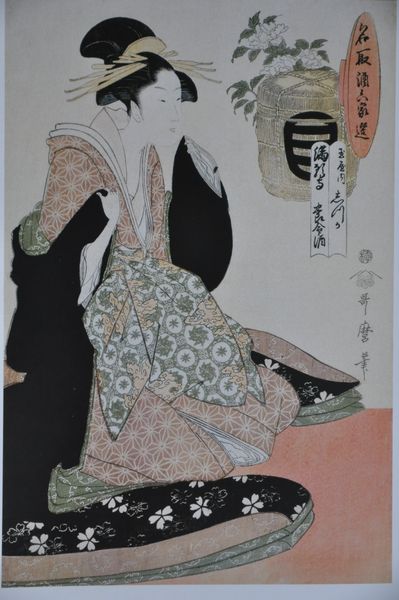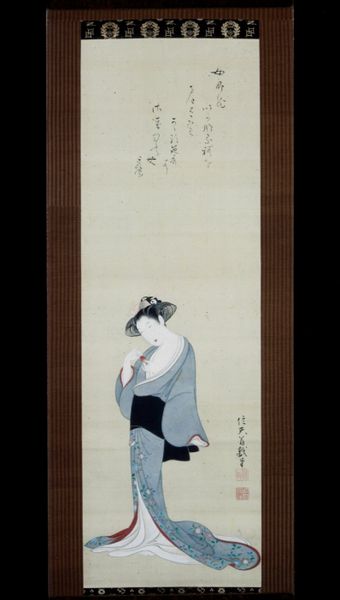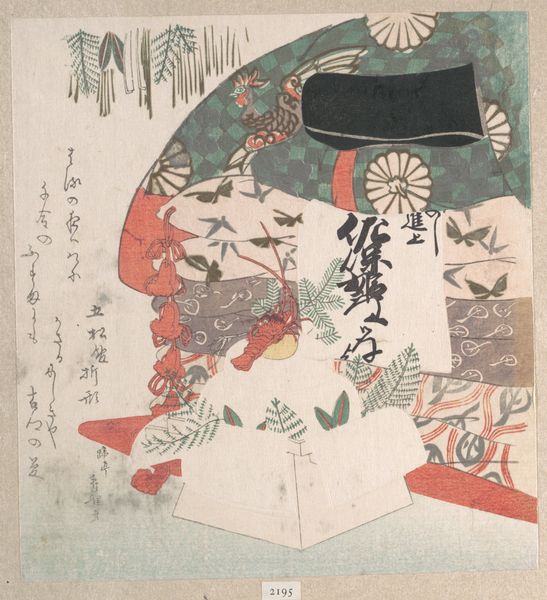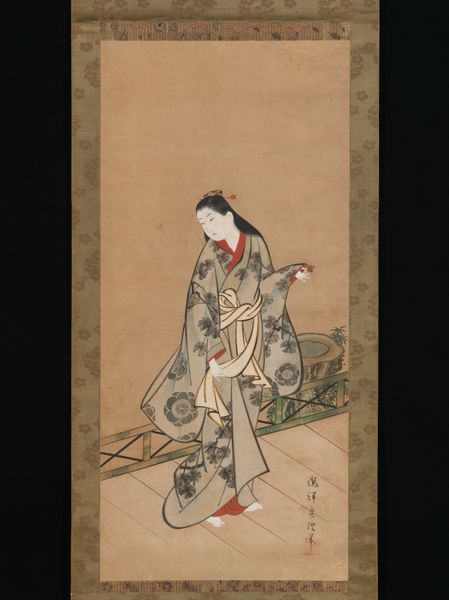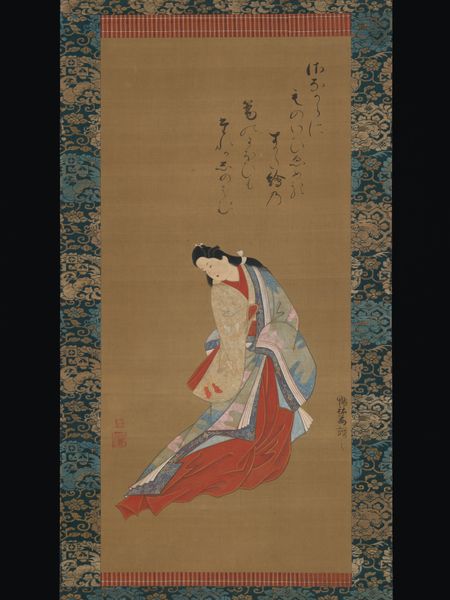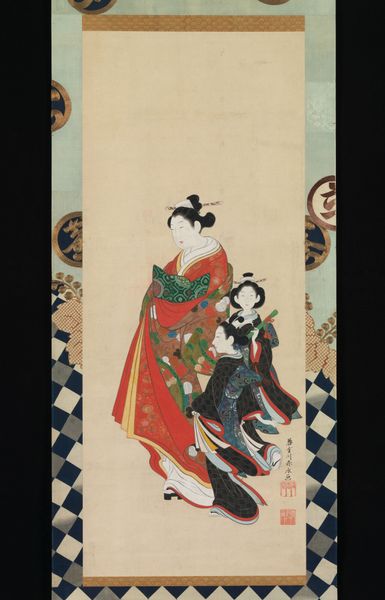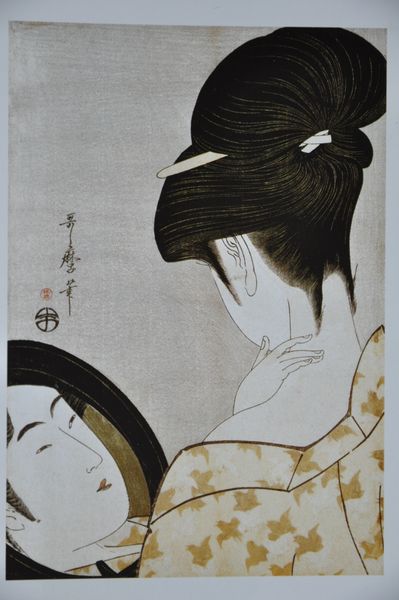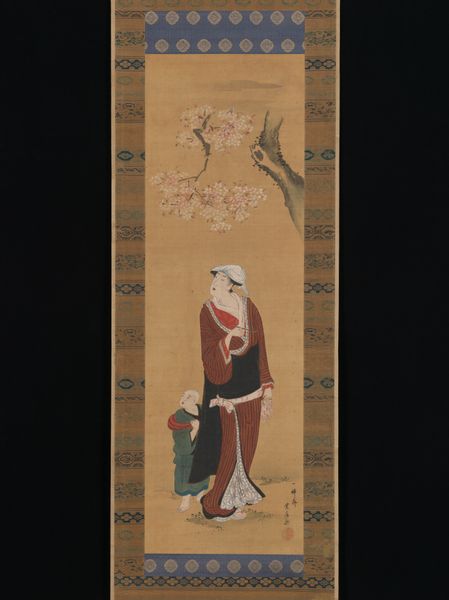
Standing prostitute wearing a kimono with wave and flower pattern c. 1715
0:00
0:00
painting, paper, hanging-scroll, ink
#
portrait
#
painting
#
ukiyo-e
#
folk art
#
paper
#
hanging-scroll
#
ink
#
genre-painting
Dimensions: 31 1/2 x 13 9/16 in. (80 x 34.5 cm) (image)68 5/16 x 19 1/2 in. (173.5 x 49.5 cm) (mount) W 54.5 cm w/roller
Copyright: Public Domain
This hanging scroll was painted by Tamura Suiō in Japan during the late 17th and early 18th centuries. It depicts a standing prostitute wearing a kimono with wave and flower patterns. Such images were known as *bijin-ga*, or paintings of beautiful women, and they were a popular genre during the Edo period. Artists responded to the rise of a wealthy merchant class by creating art that was both aesthetically pleasing and socially relevant. The courtesans of the pleasure quarters became fashion icons, their elaborate hairstyles and garments widely imitated, and these images were very popular as a result. But beyond that, we might ask, what was the status of these women within Japanese society? By consulting historical documents, like diaries and government records, and combining it with a close reading of images like this, we can get a better understanding of how this painting reflected and shaped the social norms of its time.
Comments
No comments
Be the first to comment and join the conversation on the ultimate creative platform.
